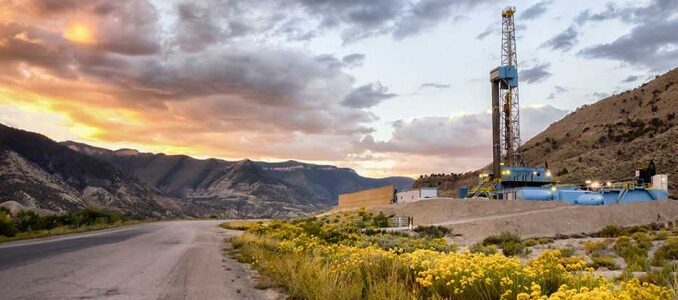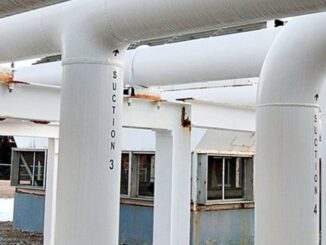
I have written on shale production in the U.S. a number of times over the past couple of years for OilPrice. My expectation that shale production would fall sharply to ~5-6 mm BOEPD by the end of 2020, has not been borne out. My view was that a lack of drilling/completion activity due to adverse price conditions would cause production to fall sharply. Historical annual decline rates for shale wells can be as high as 60% in the first year. In this article I discuss some of the reasons I feel this has occurred and what it may portend for oil supplies and prices going forward.
Price and supply movements in commodities and oil in particular often make fools out of forecasters, myself included. The thesis I formed last summer as drilling activity plunged has largely held true, with one notable exception-U.S. shale production.
- Prices have climbed as storage levels have fallen.
- Drilling has been curtailed due to capital restraint on the part of drillers.
- Consolidation has been taking place in the shale industry.
Actual production though has stayed at levels I didn’t think would be possible last year. I am on record as having thought U.S. shale production would finish 2020 between 5-6 mm BOEPD. As of the most recent EIA-Drilling Productivity Report-DPR, U.S. shale production from the seven major plays has remained in a range of 7.6-7.5 mm BOEPD.

In this article I discuss some of the reasons I feel this has occurred and what it may portend for oil supplies and prices going forward.
Technology and portfolio high grading enables U.S. shale to defy early predictions
This happy circumstance is largely due to a couple of things primarily. The first is technology making the extraction of more oil per unit of interval than even just a few years ago. And, operator high grading of their portfolios to focus almost solely on Tier I acreage. Tier I acreage, as we have discussed in the past is the low cost, high return play that works particularly well in the Permian with its stacked reservoirs.
Shale drillers have simply been making some prodigious wells in the last couple of years, and this increase in the Productivity Index-PI has made itself known. As an example I would cite Devon Energy’s, (NYSE:DVN) recent performance in its core Delaware basin area.

On the technical side, drillers have vastly lengthened the horizontal leg of the typical shale well, from slightly over a mile in 2014 to an average of 8,500 feet in early 2019. The ability to do this has come in part from improvements in drilling fluids design to permit entry into longer sections, and better rotary steerable MWD/LWD assemblies that enable more reliable real time drilling data from the bit to ensure they are staying in the sweet spot of the reservoir. Improvements in perforating, frac stage design with 4-D fracking that takes into account the frac’s progress over time have also contributed to this increase in productivity.
The amount of sand or proppant pumped per foot of interval has also increased hugely from around a 1,000 pounds per foot-PPF, to between 2,000 and 2,500 PPF. Increasing the amount of proppant ads to the well’s cost, but it also hugely increases the permeability of the completion. Permeability is a measure of the flow capacity of the rock. More permeability results in more production for longer periods of time. High grading of drilling opportunities has been a prime contributor to being able to maintain a lower decline rate that originally supposed in my calculations. What this means is that operators have been focusing on their Tier I acreage and bypassing lower tier opportunities. When you take this performance and multiply it across the top twenty or so drillers, you can begin to see how shale production manages to hover around the 7.5 mm BOEPD level.
The graphic below shows a preferential shift toward Tier I acreage over the last several years, and away from the lower tiers. Some of this is driven by a shift toward liquids production by drillers in recent years. Gas reservoirs tend to be deeper and more difficult to drill than oil reservoirs, and the price of natty isn’t always supportive.

Finally, production is somewhat delinked currently from the rig count, which still is less than half what it was before the pandemic. Operators have been choosing to bring Drilled but Uncompleted Wells-DUCs, online to maintain a flat to slightly rising production level, as opposed to mobilizing a lot of rigs to make new wells. In December, for example 159 DUCs were withdrawn from inventory as noted in last month’s EIA-Drilling Productivity Report.
Longevity of Tier I acreage inventory
One of the questions that often comes up is what will happen when Tier I acreage is drilled up. Some estimates have been put forward that this might occur within the next decade. Rystad has challenged those estimates showing an estimate of the longevity of Tier I shale in years at present rates of drilling. It comes as no surprise the Delaware sub-basin of the larger Permian basin is the king of shale, and operators there will retain a low cost drilling advantage for a number years beyond other plays.

Of interest also is a recent report that challenges some of the assumptions about lower tier acreage being substantially less valuable than Tier I. In a 2019 article carried in the Journal of Petroleum Technology-JPT, a Deloitte study was showcased that showed some geological shortcomings could be overcome by application of technology of the type we have discussed in this article. Further it challenged the assumption that rock quality alone was the determinant in obtaining maximum production from a well.
We won’t develop that concept further in this article, except to note that it plays into the larger thesis that American shale production will be a vibrant contributor to the nation’s energy security for decades to come.

Your takeaway
The primary outcome of this technological marvel will be a reduced reliance on imported oil to fuel our economy. Oil will be plentiful absent market dislocations, and if the market justifies it, production could be increased easily with higher levels of drilling.
OPEC+ has also resumed its role of Price Setter, by withholding ~7.5 mm BOPD from the market. Consistent with this philosophy is their restraint shown in recent meetings about restoring this withheld production. In their most recent meeting, earlier this month they decided to continue present production levels.
This will act to put a ceiling on oil prices keeping them from rising much beyond current levels. In a recent OilPrice article we discussed how the market had moved from Contango to Backwardation. A condition where contracts for future oil deliveries are lower than current or “spot” deliveries, and remains in effect today.
In summary, an improving global economic outlook and production restraint in the U.S. and around the world has set the stage for a remarkable recovery in oil prices for the last year. We think these drivers will remain in force for most of this year, and current pricing will be sustained for WTI and Brent.
By David Messler for Oilprice.com



